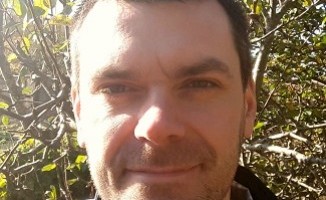Dan Mushens examines whether or not sibling abuse is normalised by society
“Girl, ten, ‘raped by her older brother’ gives birth to a boy in Colombia”. This distressing headline grabbed my attention yesterday. I continued to read the article and it goes without saying I was horrified to hear of such a crime. However, the article resonated with me for reasons linked to working with people with alcohol related brain damage (ARBD) as well as the subject of sibling abuse itself.
Working in the field of ARBD is quite a niche service user group. It’s thought the prevalence of the illness is vastly underestimated due to it sometimes being misdiagnosed as other forms of mental illness such as schizophrenia or dementia.
Researchers suggest however that there is an even larger undiagnosed ARBD population; people hidden within communities due to a sense of shame and embarrassment. It’s thought some families prefer to care for their loved ones themselves, unknowingly overlooking or intentionally dismissing the presentations of ARBD – reductions in memory and mobility to name just two – in favour of colloquial diagnoses such as eccentricity, frailty or just the typical pitfalls of later adulthood.

Although the news article is scarce on the finer details, it suggests that the parents of the girl chose not to report the crime to the police, presumably preferring to keep the crime hidden within their own family, for reasons only they can explain.
On the hard drive of my laptop, I have a semi-completed dissertation; 5000 words of a model of best social work practice on the subject of sibling abuse. The reason for it being incomplete is irrelevant for the purpose of this article but there was a time some years ago when the field of sibling abuse consumed me.
Some sibling rivalry behaviours are expected and are considered normal, meaning the fine line when rivalry becomes a type of abuse is often fudged. Definitions vary but it’s often cited that sibling abuse occurs when there are repeated incidents of physical aggression or violence, which becomes an established pattern of behaviour that parents are unable or unwilling to stop. Over time, the sibling relationship becomes reminiscent of victim and perpetrator roles.
Sibling on sibling abuse can occur in many ways, similar to the more commonly discussed domestic abuse. It encompasses coercion, bullying and manipulation; verbal, emotional, physical, psychological and sexual abuse as well as intimidation and exploitation.
A deluge of other manifestations certainly present themselves also, but it’s the incestuous element of sibling on sibling sexual abuse that tends to get sensationalised and making the headlines. The everyday or ‘bread and butter’ incidents of abuse seem to be normalised or unworthy of mainstream discussion and attention.
A demeaning, spiteful or hurtful comment here; or a slap, kick or a punch there. Mixed with a ‘if you don’t do this I’ll tell mum and dad’ or a ‘if you tell mum or dad they’ll never believe you’ comment – can have longstanding and detrimental consequences for victims.
ARBD and sibling abuse share a common feature in the sense that they are seldom spoken of, but are more likely to be overlooked or disregarded. Explanations for sibling abuse are more often than not brushed aside as being ‘sibling rivalry’, a bit of ‘rough and tumble’, ‘play-fighting’ or ‘boys being boys’.
It’s hard enough for victims of abuse to speak out at the best of times. But when a child sibling on the receiving end of abuse shares not only the same genes but the same home as the perpetrator, knowing how to escape must be like a bird wishing to leave its cage.
Dan Mushens is a recovery practitioner for Scottish mental health charity Penumbra






